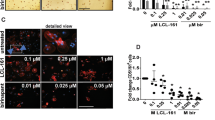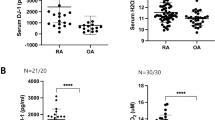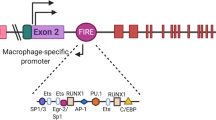Abstract
Decoy receptor 3 (DcR3), a member of the tumor necrosis factor (TNF) receptor superfamily, is known to be involved in cell survival and osteoclast (OC) formation. In this study, we show that malignant plasma cells and T lymphocytes from multiple myeloma (MM) bone disease patients, as well as Karpas 909, a human myeloma cell line, directly produce DcR3. By interacting with FasL, this molecule could inhibit OC apoptosis. In fact, the use of a neutralizing anti-DcR3 antibody induces a reduction of cell viability with a consequent increase of apoptotic cell number, the activation of caspase-8 and -3, and DNA fragmentation. Furthermore, we show that DcR3 supports OC formation in samples from MM patients through the upregulation of RANKL and TNFα by T lymphocytes and only TNFα by CD14+ cells. In conclusion, our data provide the first evidence of the expression of DcR3 in MM, and the involvement of this molecule in supporting the survival and formation of OCs from MM bone disease patients. The production of DcR3 by T lymphocytes confers these cells a role in the pathogenesis of bone disease associated with MM.
This is a preview of subscription content, access via your institution
Access options
Subscribe to this journal
Receive 12 print issues and online access
$259.00 per year
only $21.58 per issue
Buy this article
- Purchase on Springer Link
- Instant access to full article PDF
Prices may be subject to local taxes which are calculated during checkout





Similar content being viewed by others
References
Edwards CM, Zhuang J, Mundy GR . The pathogenesis of the bone disease of multiple myeloma. Bone 2008; 42: 1007–1013.
Boyle WJ, Simonet WS, Lacey DL . Osteoclast differentiation and activation. Nature 2003; 423: 337–342.
Colucci S, Brunetti G, Rizzi R, Zonno A, Mori G, Colaianni G et al. T cells support osteoclastogenesis in an in vitro model derived from human multiple myeloma bone disease: the role of the OPG/TRAIL interaction. Blood 2004; 104: 3722–3730.
Giuliani N, Colla S, Sala R, Moroni M, Lazzaretti M, La Monica S et al. Human myeloma cells stimulate the receptor activator of nuclear factor-kappa B ligand (RANKL) in T lymphocytes: a potential role in multiple myeloma bone disease. Blood 2002; 100: 4615–4621.
Miranda-Carús ME, Benito-Miguel M, Balsa A, Cobo-Ibáñez T, Pérez de Ayala C, Pascual-Salcedo D et al. Peripheral blood T lymphocytes from patients with early rheumatoid arthritis express RANKL and interleukin-15 on the cell surface and promote osteoclastogenesis in autologous monocytes. Arthritis Rheum 2006; 54: 1151–1164.
Brunetti G, Colucci S, Pignataro P, Coricciati M, Mori G, Cirulli N et al. T cells support the osteoclastogenesis in an in vitro model derived from human periodontitis patients. J Periodontol 2005; 76: 1675–1680.
Colucci S, Brunetti G, Cantatore FP, Oranger A, Mori G, Quarta L et al. Lymphocytes and synovial fluid fibroblasts support the osteoclastogenesis through RANKL, TNF-alpha, and IL-7 in an in vitro model derived from human psoriatic arthritis. J Pathol 2007; 212: 47–55.
Roato I, Grano M, Brunetti G, Colucci S, Mussa A, Bertetto O et al. Mechanisms of spontaneous osteoclastogenesis in cancer with bone involvement. FASEB J 2005; 19: 228–230.
Lam J, Takeshita S, Barker JE, Kanagawa O, Ross FP, Teitelbaum SL . TNF-alpha induces osteoclastogenesis by direct stimulation of macrophages exposed to permissive levels of RANK ligand. J Clin Invest 2000; 106: 1481–1488.
Kim N, Kadono Y, Takami M, Lee J, Lee SH, Okada F et al. Osteoclast differentiation independent of the TRANCE-RANK-TRAF6 axis. J Exp Med 2005; 202: 589–595.
Fuller K, Murphy C, Kirstein B, Fox SW, Chambers TJ . TNF alpha potently activates osteoclasts, through a direct action independent of and strongly synergistic with RANKL. Endocrinology 2002; 143: 1108–1118.
Abu-Amer Y, Erdmann J, Kollias G, Alexopoulou L, Ross FP, Teitelbaum SL . Tumor necrosis factor receptors types 1 and 2 differentially regulate osteoclastogenesis. J Biol Chem 2000; 275: 27307–27310.
Yang CR, Wang JH, Hsieh SL, Wang SM, Hsu TL, Lin WW . Decoy receptor 3 (DcR3) induces osteoclast formation from monocyte/macrophage lineage precursor cells. Cell Death Differ 2004; 11 (Suppl 1): S97–S107.
Tang CH, Hsu TL, Lin WW, Lai MZ, Yang RS, Hsieh SL et al. Attenuation of bone mass and increase of osteoclast formation in decoy receptor 3 transgenic mice. J Biol Chem 2007; 282: 2346–2354.
Pitti RM, Marsters SA, Lawrence DA, Roy M, Kischkel FC, Dowd P et al. Genomic amplification of a decoy receptor for Fas ligand in lung and colon cancer. Nature 1998; 396: 699–703.
Roth W, Isenmann S, Nakamura M, Platten M, Wick W, Kleihues P et al. Soluble decoy receptor 3 is expressed by malignant gliomas and suppresses CD95 ligand-induced apoptosis and chemotaxis. Cancer Res 2001; 61: 2759–2765.
Bai C, Connolly B, Metzker ML, Hilliard CA, Liu X, Sandig V et al. Overexpression of M68/DcR3 in human gastrointestinal tract tumors independent of gene amplification and its location in a four-gene cluster. Proc Natl Acad Sci USA 2000; 97: 1230–1235.
Ohshima K, Haraoka S, Sugihara M, Suzumiya J, Kawasaki C, Kanda M et al. Amplification and expression of a decoy receptor for Fas ligand (DcR3) in virus (EBV or HTLV-1) associated lymphomas. Cancer Lett 2000; 160: 89–97.
Yu KY, Kwon B, Ni J, Zhai Y, Ebner R, Kwon BX . A newly identified member of tumor necrosis factor receptor superfamily (TR6) suppresses LIGHT-mediated apoptosis. J Biol Chem 1999; 274: 13733–13736.
Migone TS, Zhang J, Luo X, Zhuang L, Chen C, Hu B et al. TL1A is a TNF-like ligand for DR3 and TR6/DcR3 and functions as a T cell costimulator. Immunity 2002; 16: 479–492.
International Myeloma Working Group. Criteria for the classification of monoclonal gammopathies, multiple myeloma and related disorders: a report of the International Myeloma Working Group. Br J Haematol 2003; 121: 749–757.
Greipp PR, San Miguel J, Durie BG, Crowley JJ, Barlogie B, Bladé J et al. International staging system for multiple myeloma. J Clin Oncol 2005; 23: 3412–3420.
Connor JP, Felder M . Ascites from epithelial ovarian cancer contain high levels of functional decoy receptor 3 (DcR3) and is associated with platinum resistance. Gynecol Oncol 2008; 111: 330–335.
Pfaffl MW . A new mathematical model for relative quantification in real-time RT-PCR. Nucleic Acids Res 2001; 29: e45.
Colucci S, Brunetti G, Cantatore FP, Oranger A, Mori G, Pignataro P et al. The death receptor DR5 is involved in TRAIL-mediated human osteoclast apoptosis. Apoptosis 2007; 12: 1623–1632.
Shen HW, Gao SL, Wu YL, Peng SY . Overexpression of decoy receptor 3 in hepatocellular carcinoma and its association with resistance to Fas ligand-mediated apoptosis. World J Gastroenterol 2005; 11: 5926–5930.
Tsuji S, Hosotani R, Yonehara S, Masui T, Tulachan SS, Nakajima S et al. Endogenous decoy receptor 3 blocks the growth inhibition signals mediated by Fas ligand in human pancreatic adenocarcinoma. Int J Cancer 2003; 106: 17–25.
Elnemr A, Ohta T, Yachie A, Kayahara M, Kitagawa H, Fujimura T et al. Human pancreatic cancer cells disable function of Fas receptors at several levels in Fas signal transduction pathway. Int J Oncol 2001; 18: 311–316.
Scaffidi C, Fulda S, Srinivasan A, Friesen C, Li F, Tomaselli KJ et al. Two CD95 (APO-1/Fas) signaling pathways. EMBO J 1998; 17: 1675–1687.
Hayashi S, Miura Y, Nishiyama T, Mitani M, Tateishi K, Sakai Y et al. Decoy receptor 3 expressed in rheumatoid synovial fibroblasts protects the cells against Fas-induced apoptosis. Arthritis Rheum 2007; 56: 1067–1075.
Strand S, Galle PR . Immune evasion by tumours: involvement of the CD95 (APO-1/Fas) system and its clinical implications. Mol Med Today 1998; 4: 63–68.
Chou CT, Yang JS, Lee MR . Apoptosis in rheumatoid arthritis - expression of Fas, Fas-L, p53, and Bcl-2 in rheumatoid synovial tissues. J Pathol 2001; 193: 110–116.
Giuliani N, Lisignoli G, Colla S, Lazzaretti M, Storti P, Mancini C et al. CC-Chemokine ligand 20/macrophage inflammatory protein-3alpha and CC-chemokine receptor 6 are overexpressed in myeloma microenvironment related to osteolytic bone lesions. Cancer Res 2008; 68: 6840–6850.
El Hajj Dib I, Mélanie G, Valery S, Romuald M, Michel B, Kamel S . Multiple myeloma cells directly stimulate bone resorption in vitro by down-regulating mature osteoclast apoptosis. Leuk Res 2008; 2: 1279–1287.
Edwards JR, Sun SG, Locklin R, Shipman CM, Adamopoulos IE, Athanasou NA et al. LIGHT (TNFSF14), a novel mediator of bone resorption, is elevated in rheumatoid arthritis. Arthritis Rheum 2006; 54: 1451–1462.
Acknowledgements
We thank Ministero dell'Istruzione Università e Ricerca (ex 60% grant to Maria Grano) and Multiple Myeloma Research Foundation (MMRF) for financial support, and Ms MVC Pragnell, BA, for linguistic help.
Author information
Authors and Affiliations
Corresponding author
Rights and permissions
About this article
Cite this article
Colucci, S., Brunetti, G., Mori, G. et al. Soluble decoy receptor 3 modulates the survival and formation of osteoclasts from multiple myeloma bone disease patients. Leukemia 23, 2139–2146 (2009). https://doi.org/10.1038/leu.2009.136
Received:
Revised:
Accepted:
Published:
Issue Date:
DOI: https://doi.org/10.1038/leu.2009.136
Keywords
This article is cited by
-
Myeloma and Bone Disease
Current Osteoporosis Reports (2017)
-
Mechanisms of Altered Bone Remodeling in Multiple Myeloma
Clinical Reviews in Bone and Mineral Metabolism (2017)
-
Granule exocytosis mediates immune surveillance of senescent cells
Oncogene (2013)
-
Bisphosphonates in Multiple Myeloma: Preclinical and Clinical Data
Clinical Reviews in Bone and Mineral Metabolism (2013)
-
Osteotropic Cancers: From Primary Tumor to Bone
Clinical Reviews in Bone and Mineral Metabolism (2013)



